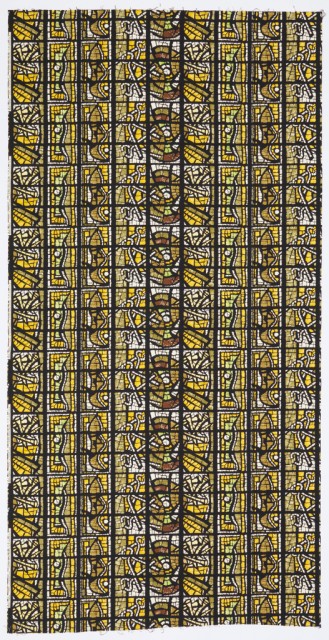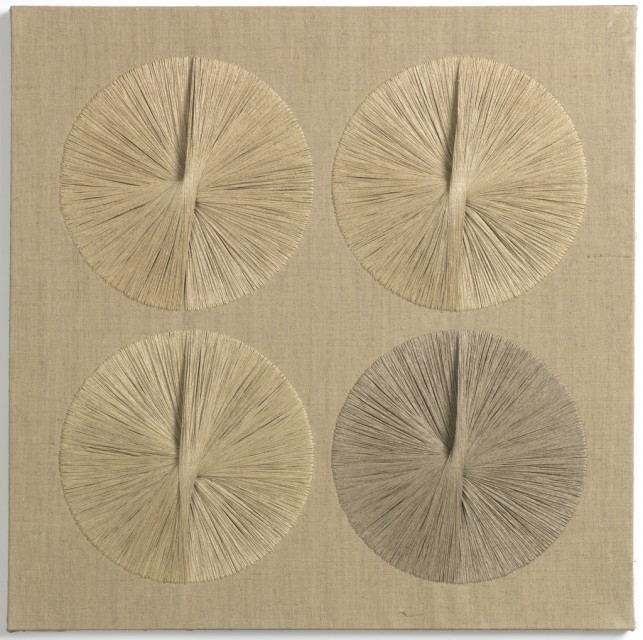Anni Albers used her art to introduce order and clarity into an otherwise unstable and chaotic world. She grew up in Berlin during World War I and in 1933 was forced to leave Germany for the US after the Nazis came to power and closed the Bauhaus where she and her husband, Josef Albers, were...
This charming textile depicting a Seder was made in the late 1930s by A. Nedby, a ten-year old student at the Educational Alliance Art School on Manhattan’s Lower East Side. The Educational Alliance was founded in 1889 to help Eastern European Jewish immigrants assimilate to life in America. In addition to vocational training and English...
In 1951, Fernand Léger designed seventeen monumental stained glass windows (vitrail, in French), depicting the instruments of Christ’s passion, for the new Eglise du Sacré Coeur in Audincourt, France. In 1955, Léger used the design for one of these windows, Pincers and Nails, as the pattern for Vitrail, a textile produced by Fuller Fabrics. Léger...
Weaver and designer Dorothy Liebes owed much of her success to her ability to create textiles that complemented and enhanced mid-century modern architecture. Using windows to bring the outside in was an integral part of the period’s new design for living. Multiple large windows became a standard feature in new homes, often replacing fireplaces as...
The granite and glass Ford Foundation Headquarters Building on East 42nd Street in Manhattan was designed by Kevin Roche John Dinkeloo Associates. Completed in 1967, the building is an icon of International Style Modernism. New York Times critic Ada Louise Huxtable hailed the building, with its sky-lit atrium and lush indoor garden, as “12 stories...
America 1957. Eisenhower was the President. Elvis was the King. And Ford Motor Company introduced its new 1957 automobiles, a “new kind of Ford with a touch of tomorrow.” The new Fords were wider, longer, lower, and zippier. Under the hood, the “inner Ford” has been re-engineered: that’s “what put the magic in the new...
Weaver and textile designer Dorothy Liebes had twin obsessions: texture and color, both exemplified by this sample from the museum’s collection. Liebes’ textiles were known for her innovative use of yarns of different materials and weights to create textured surfaces. She also employed inventive weave structures to create texture, as seen in this sample, where...






